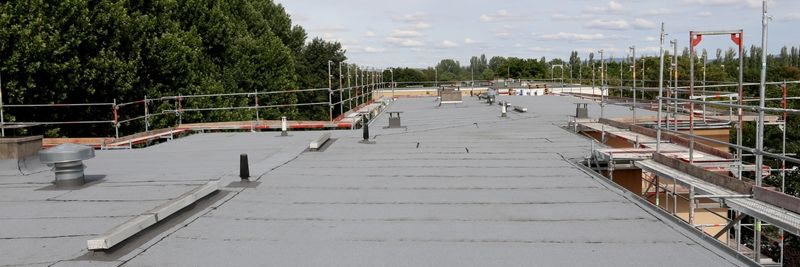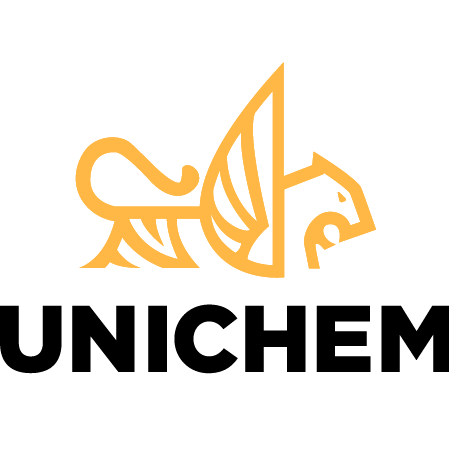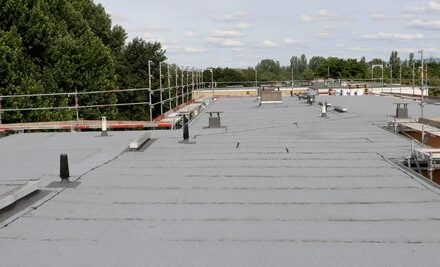
Thermoplastic Polyolefin (TPO) and Ethylene Propylene Diene Terpolymer (EPDM) are the two main types of single-ply membrane roofing types for commercial buildings. They differ in the way they are installed, the energy efficiencies they provide, and how they are installed.
TPO Roofing: Fastest Growing Roofing System
There has been a growing demand in recent years for TPO roofing for both residential, but mostly commercial buildings due to increased energy efficiency, which helps to reduce operating costs in addition to a more environmentally friendly roofing system over other types. According to the National Roofing Contractors Association, NRCA, TPO roofing systems make up about 40% of the overall commercial roofing market.
TPO roofing systems are typically white in color and naturally reflect UV rays from the surface, improving energy efficiency. TPO is known for its heat-reflective properties and resistance to damage from chemical and ozone exposure. TPO roofing membranes are available in various sizes, such as 10-,12-or 20-foot wide, which are delivered on rolls to the commercial installation site. TPO roofing provides high performance at a relatively low cost when installed correctly.
TPO Roofing Material and Installation Affect Roofing Performance
A TPO roofing system consists of several layers of materials with a TPO membrane on the top. Under the membrane is where bonding adhesive is applied, if fully adhered, to attach the membrane to the next layer, the cover board, with a layer of insulation under that. Next, there is a vapor barrier and the underlayment, which are all attached to the metal roof deck.
The membrane itself is available in varying thicknesses, such as 45 mil, 60, or 90 mil, with thicker membranes providing better long-term durability. The level of thickness chosen depends upon the climate and operations. For example, if a company expects to have workers on the roof for whatever reason, a thicker membrane would be a good idea.
Attaching the TPO Membrane
The two primary methods to attach the TPO roofing membrane have been with mechanical fasteners or a fully adhered option with adhesives. Some roofing installers are realizing the benefit of combining the best of these two methods by using a two-stage curing adhesive on mechanical fasteners, including pucks and plates.
Mechanical Attachment
Mechanically attached roofing systems are less expensive than fully adhered and can install in low temperatures as long as the membrane is kept above 60° prior to installation. They are less energy efficient if no air barrier is installed below and a structural analysis is required due to the additional load. One of the biggest drawbacks of simply using mechanical fasteners is the billowing effect of the membrane. The membrane itself is fully sealed at the seams, although a strong wind can create air pockets above the insulation, which reduces energy efficiency and risks damage to the roof. According to the Steel Deck Institute, SDI, under certain uplift conditions, the membrane attachment could produce loads that exceed the capacity of the deck. These loads would be acceptable if applied uniformly with the reinforcement of roofing adhesives.
Adhered Attachment with Adhesive
A fully adhered TPO roofing membrane is bonded to the substrate below with a continuous layer of TPO roofing adhesive. This type of installation will cost more, although the membrane acts as an air barrier with no billowing effect and is more energy efficient. A uniform structure load is achieved, and there is no concern of a problem with the noise due to wind and billowing of the membrane.
Mechanical Pucks and Plates with B-Stage Adhesive
Many TPO roofing installers are realizing the benefits of combining the best of both worlds by using mechanical fasteners, including the pucks and plates, to install roofing membranes with a TPO B-stage curing adhesive already applied. This provides many benefits in that the mechanical fasteners do not actually puncture the membrane. They are applied to the membrane and the proper spacing locations, and the adhesive is temperature activated to bond when heated. This allows quick installation without the need to screw in each fastener, there is no puncturing of the membrane, and the bonding is permanent.
UNICHEM has led the industry in providing TPO roofing adhesive specifically for mechanical pucks and plates. Our uniBOND TPO roofing adhesive provides a B-stage curing option that allows roofers to quickly install TPO membranes and just as quickly adhere the membrane to the substrate with heat bonding. This provides many benefits with cost savings in materials and labor while still providing a high-quality, bonded TPO roofing system.
Universal Chemicals & Coatings, Inc., UNICHEM, has been an industry-leading custom chemical and coatings manufacturer for more than 50 years. We offer industrial adhesive solutions for a wide range of industries and applications. Contact us to learn more about uniBOND industrial adhesive and TPO roofing installation solutions.


